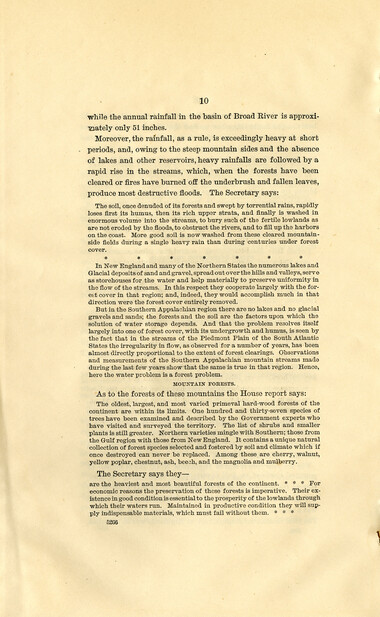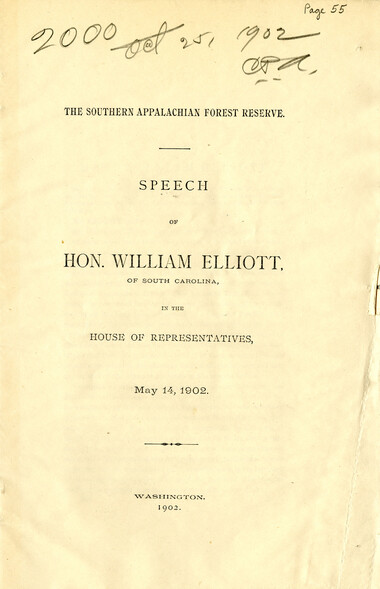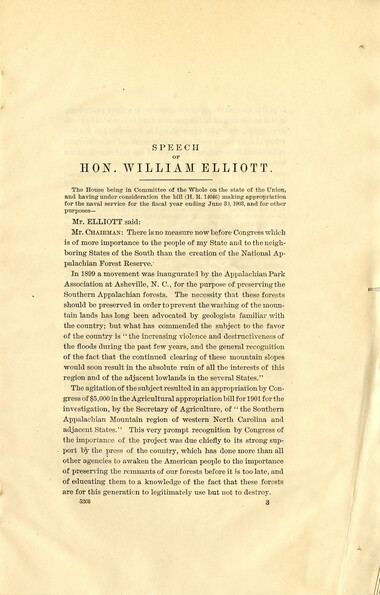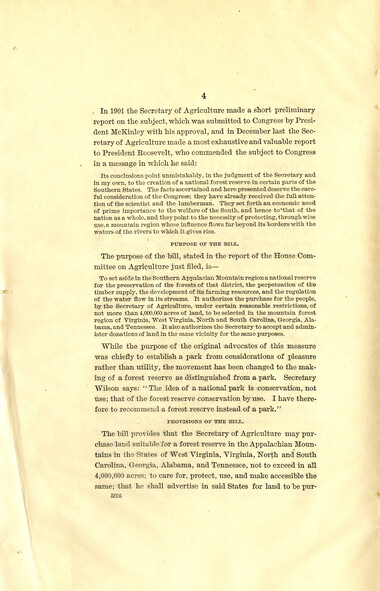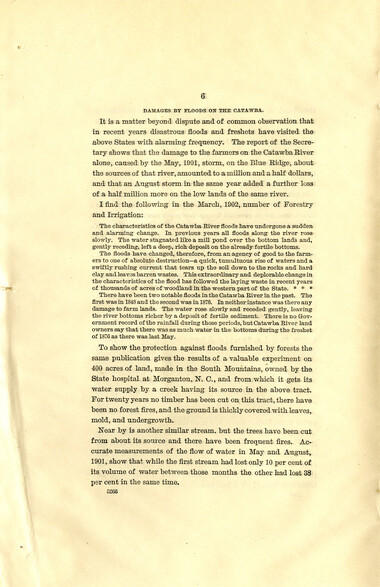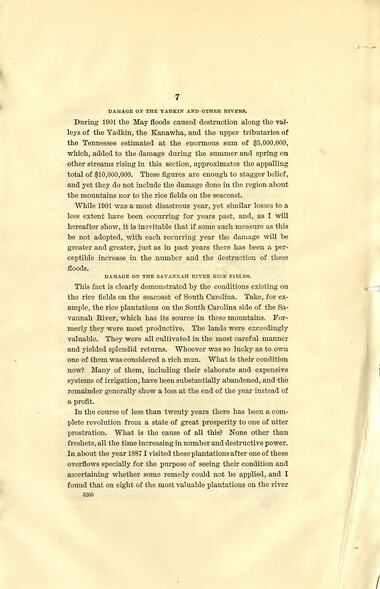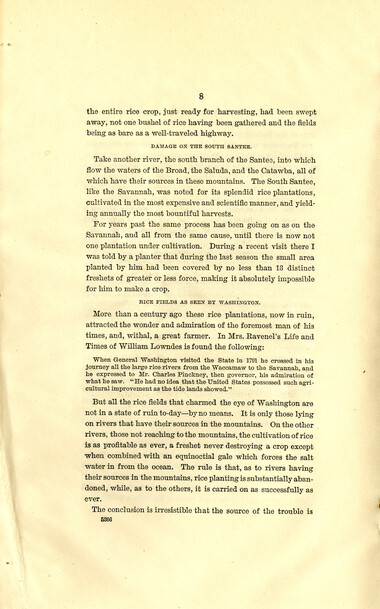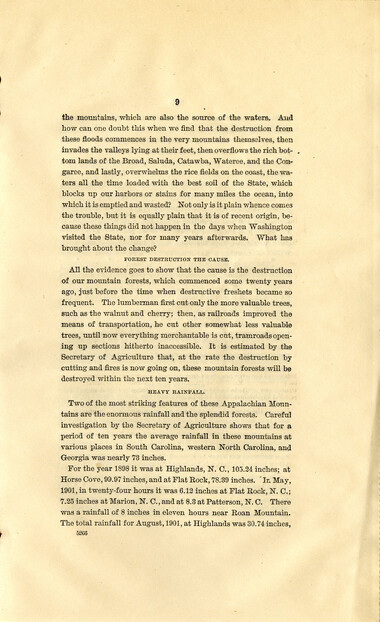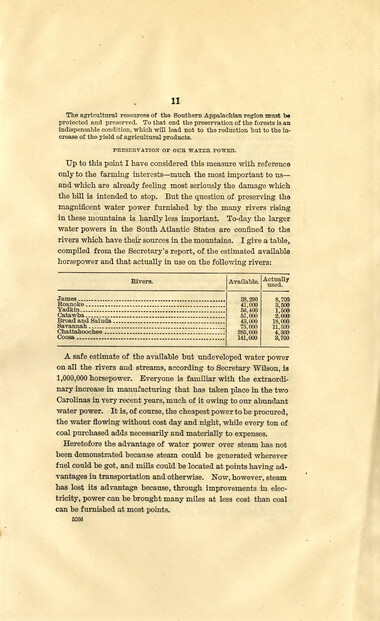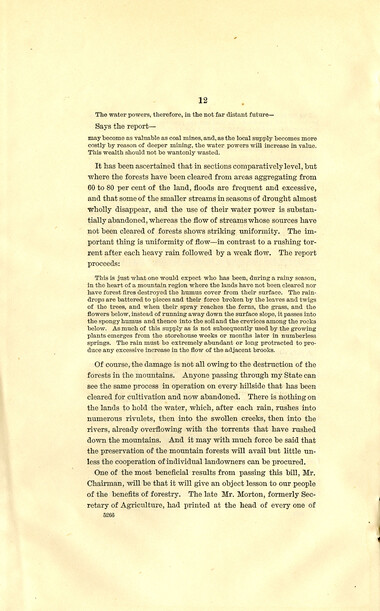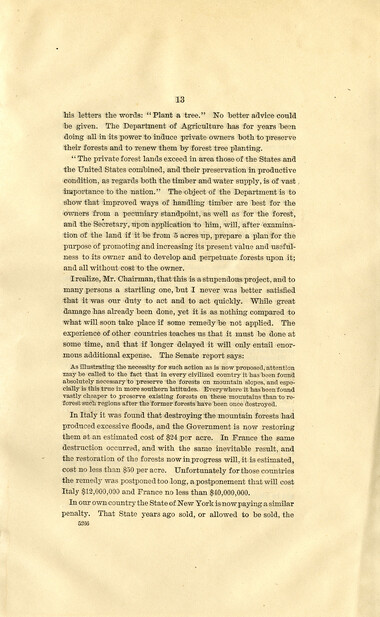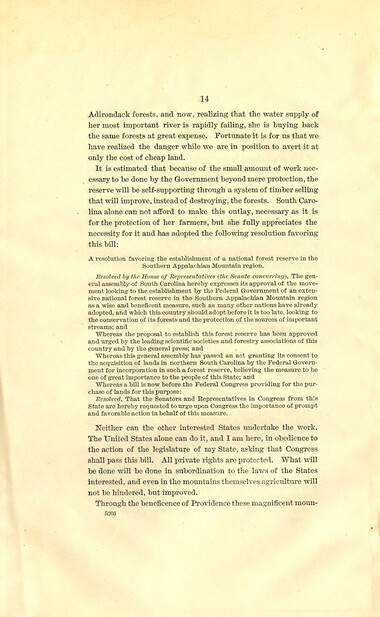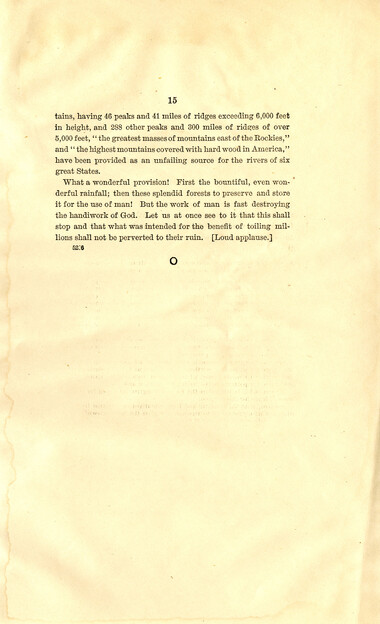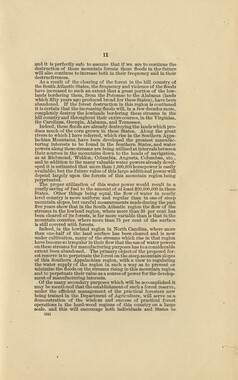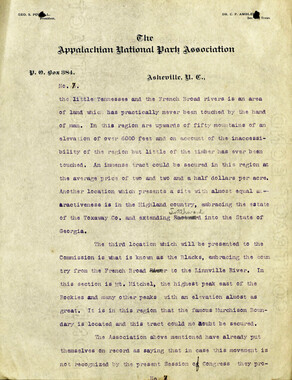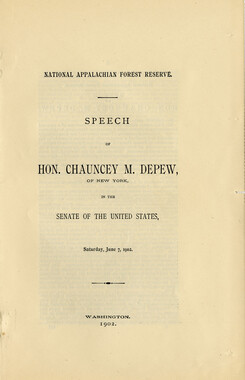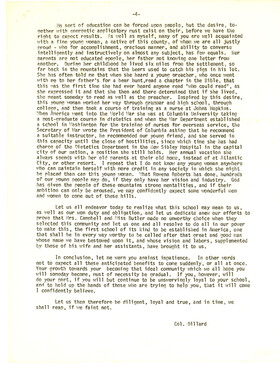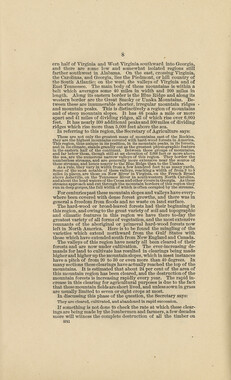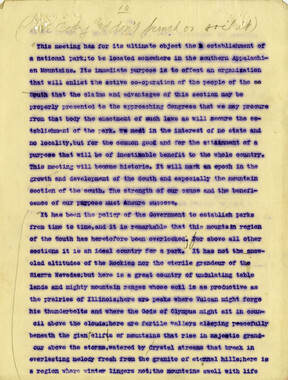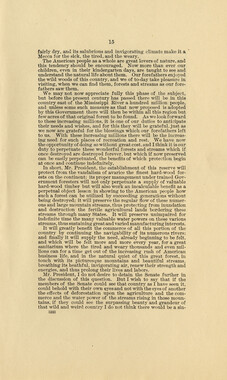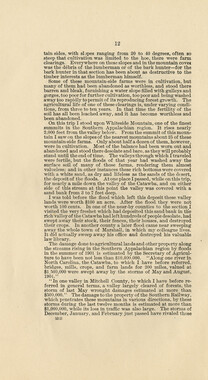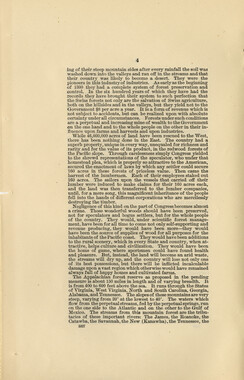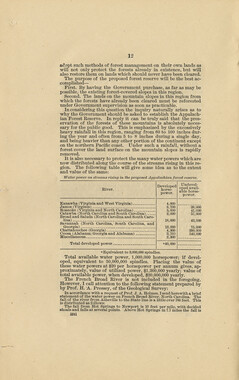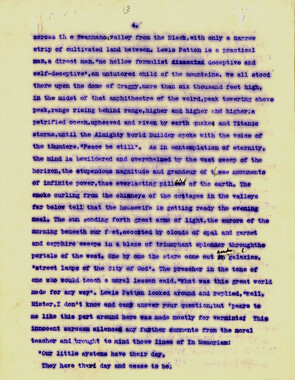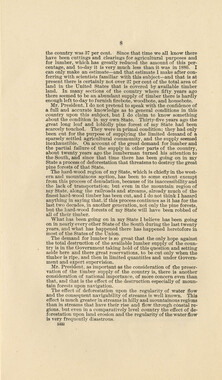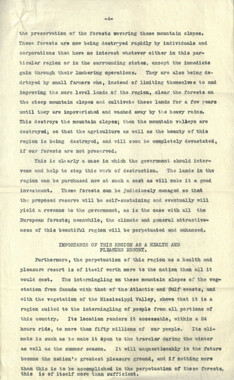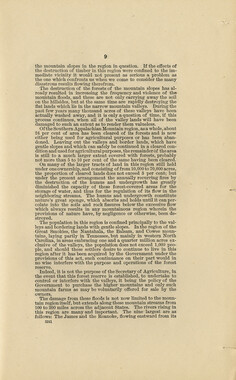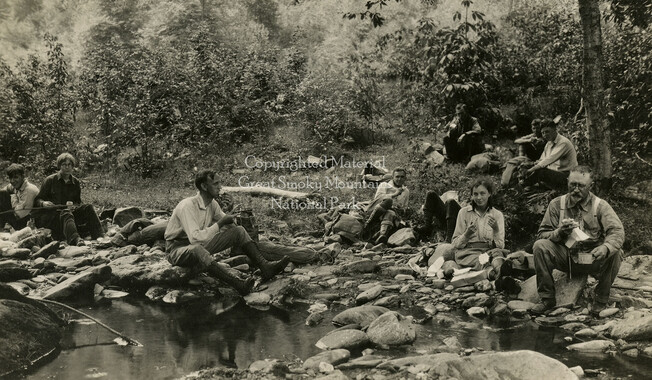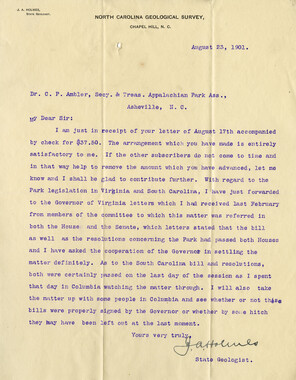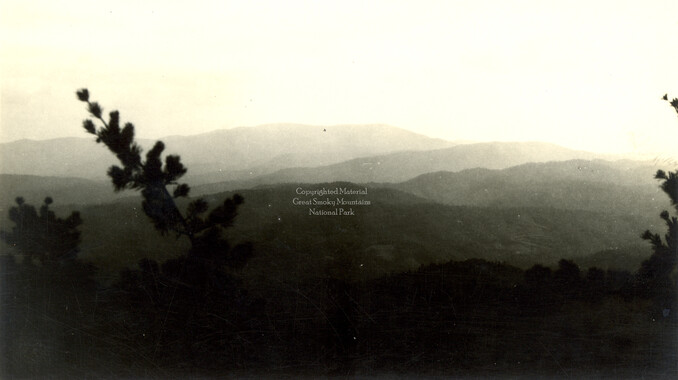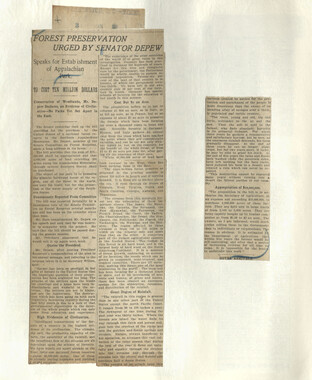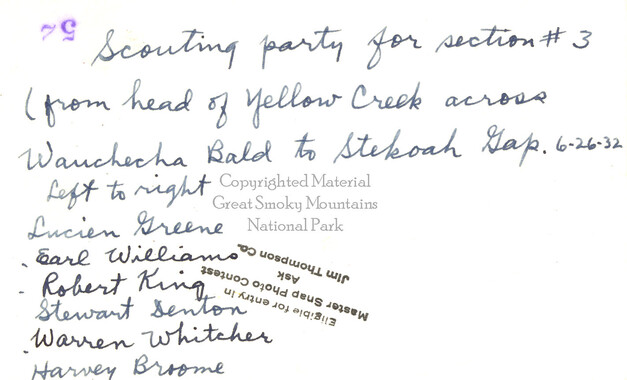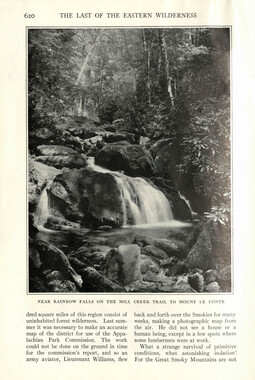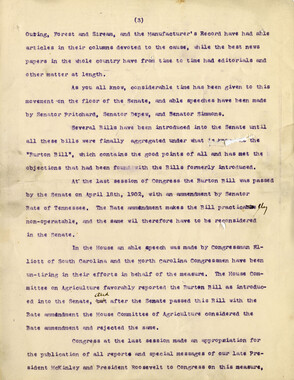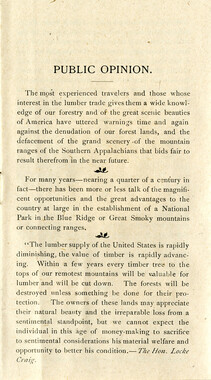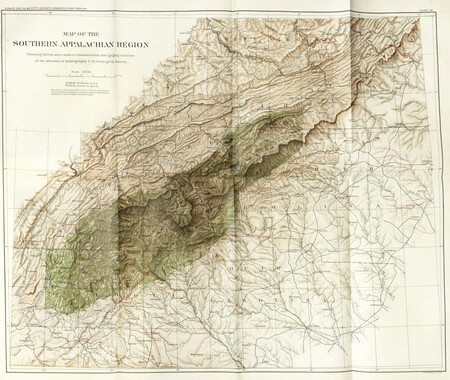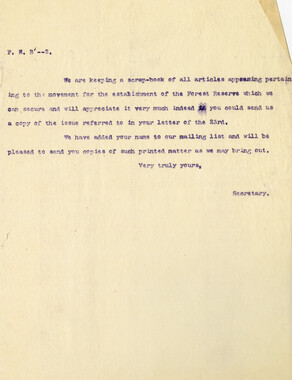Western Carolina University (11)
View all
- Canton Champion Fibre Company (110)
- Cherokee Traditions (7)
- Civil War in Southern Appalachia (1)
- Craft Revival (193)
- Great Smoky Mountains - A Park for America (294)
- Highlights from Western Carolina University (20)
- Horace Kephart (8)
- Oral Histories of Western North Carolina (2)
- Picturing Appalachia (447)
- Travel Western North Carolina (29)
- Western Carolina University: Making Memories (103)
- Journeys Through Jackson (0)
- LGBTQIA+ Archive of Jackson County (0)
- Stories of Mountain Folk (0)
- Western Carolina University Fine Art Museum Vitreograph Collection (0)
- Western Carolina University Herbarium (0)
- Western Carolina University Publications (0)
- Western Carolina University Restricted Electronic Theses and Dissertations (0)
- Western North Carolina Regional Maps (0)
- World War II in Southern Appalachia (0)
University of North Carolina Asheville (1)
View all
- Forestry in Western North Carolina (180)
- Faces of Asheville (0)
- Grove Park Inn Photograph Collection (0)
- Isaiah Rice Photograph Collection (0)
- Morse Family Chimney Rock Park Collection (0)
- Picturing Asheville and Western North Carolina (0)
- Allanstand Cottage Industries (25)
- Appalachian National Park Association (42)
- Ensley, A. L. (Abraham Lincoln), 1865-1948 (274)
- George Butz (BFS 1907) (31)
- Goodrich, Frances Louisa (68)
- Kephart, Horace, 1862-1931 (1)
- North Carolina Park Commission (3)
- Stalcup, Jesse Bryson (36)
- USFS (3)
- Wilburn, Hiram Coleman, 1880-1967 (4)
- Bennett, Kelly, 1890-1974 (0)
- Berry, Walter (0)
- Brasstown Carvers (0)
- Cain, Doreyl Ammons (0)
- Carver, George Washington, 1864?-1943 (0)
- Cathey, Joseph, 1803-1874 (0)
- Champion Fibre Company (0)
- Champion Paper and Fibre Company (0)
- Cherokee Indian Fair Association (0)
- Cherokee Language Program (0)
- Crittenden, Lorraine (0)
- Crowe, Amanda (0)
- Edmonston, Thomas Benton, 1842-1907 (0)
- Fromer, Irving Rhodes, 1913-1994 (0)
- Grant, George Alexander, 1891-1964 (0)
- Heard, Marian Gladys (0)
- Kephart, Calvin, 1883-1969 (0)
- Kephart, Laura, 1862-1954 (0)
- Laney, Gideon Thomas, 1889-1976 (0)
- Masa, George, 1881-1933 (0)
- McElhinney, William Julian, 1896-1953 (0)
- Niggli, Josephina, 1910-1983 (0)
- Osborne, Kezia Stradley (0)
- Owens, Samuel Robert, 1918-1995 (0)
- Penland Weavers and Potters (0)
- Rhodes, Judy (0)
- Roberts, Vivienne (0)
- Roth, Albert, 1890-1974 (0)
- Schenck, Carl Alwin, 1868-1955 (0)
- Sherrill's Photography Studio (0)
- Smith, Edward Clark (0)
- Southern Highland Handicraft Guild (0)
- Southern Highlanders, Inc. (0)
- Stearns, I. K. (0)
- Thompson, James Edward, 1880-1976 (0)
- United States. Indian Arts and Crafts Board (0)
- Vance, Zebulon Baird, 1830-1894 (0)
- Weaver, Zebulon, 1872-1948 (0)
- Western Carolina College (0)
- Western Carolina Teachers College (0)
- Western Carolina University (0)
- Western Carolina University. Mountain Heritage Center (0)
- Whitman, Walt, 1819-1892 (0)
- Williams, Isadora (0)
- 1800s (3)
- 1830s (1)
- 1850s (4)
- 1860s (4)
- 1870s (4)
- 1880s (9)
- 1890s (130)
- 1900s (1394)
- 1910s (317)
- 1920s (139)
- 1930s (60)
- 1940s (12)
- 1950s (5)
- 1960s (1)
- 2000s (3)
- 2010s (1)
- 1600s (0)
- 1700s (0)
- 1810s (0)
- 1820s (0)
- 1840s (0)
- 1970s (0)
- 1980s (0)
- 1990s (0)
- 2020s (0)
- Appalachian Region, Southern (240)
- Asheville (N.C.) (15)
- Avery County (N.C.) (5)
- Blount County (Tenn.) (2)
- Buncombe County (N.C.) (221)
- Cherokee County (N.C.) (8)
- Clay County (N.C.) (1)
- Graham County (N.C.) (1)
- Great Smoky Mountains National Park (N.C. and Tenn.) (6)
- Haywood County (N.C.) (146)
- Henderson County (N.C.) (10)
- Jackson County (N.C.) (343)
- Knox County (Tenn.) (4)
- Macon County (N.C.) (50)
- Madison County (N.C.) (34)
- McDowell County (N.C.) (4)
- Mitchell County (N.C.) (5)
- Polk County (N.C.) (1)
- Qualla Boundary (9)
- Rutherford County (N.C.) (16)
- Swain County (N.C.) (37)
- Transylvania County (N.C.) (151)
- Watauga County (N.C.) (2)
- Waynesville (N.C.) (1)
- Yancey County (N.C.) (1)
- Knoxville (Tenn.) (0)
- Lake Santeetlah (N.C.) (0)
- Aerial Views (14)
- Artifacts (object Genre) (74)
- Clippings (information Artifacts) (16)
- Crafts (art Genres) (24)
- Drawings (visual Works) (1)
- Fiction (general Genre) (1)
- Financial Records (6)
- Fliers (printed Matter) (19)
- Glass Plate Negatives (351)
- Internegatives (1)
- Interviews (2)
- Land Surveys (3)
- Letters (correspondence) (73)
- Manuscripts (documents) (11)
- Maps (documents) (11)
- Memorandums (7)
- Minutes (administrative Records) (15)
- Negatives (photographs) (22)
- Newsletters (2)
- Photographs (631)
- Portraits (380)
- Postcards (67)
- Programs (documents) (14)
- Publications (documents) (30)
- Scrapbooks (2)
- Slides (photographs) (10)
- Sound Recordings (6)
- Speeches (documents) (11)
- Transcripts (31)
- Aerial Photographs (0)
- Albums (books) (0)
- Articles (0)
- Bibliographies (0)
- Biography (general Genre) (0)
- Cards (information Artifacts) (0)
- Copybooks (instructional Materials) (0)
- Depictions (visual Works) (0)
- Design Drawings (0)
- Envelopes (0)
- Exhibitions (events) (0)
- Facsimiles (reproductions) (0)
- Guidebooks (0)
- Newspapers (0)
- Notebooks (0)
- Occupation Currency (0)
- Paintings (visual Works) (0)
- Pen And Ink Drawings (0)
- Periodicals (0)
- Personal Narratives (0)
- Plans (maps) (0)
- Poetry (0)
- Questionnaires (0)
- Sayings (literary Genre) (0)
- Sheet Music (0)
- Songs (musical Compositions) (0)
- Specimens (0)
- Text Messages (0)
- Tintypes (photographs) (0)
- Video Recordings (physical Artifacts) (0)
- Vitreographs (0)
- A.L. Ensley Collection (274)
- Appalachian National Park Association Records (268)
- Axley-Meroney Collection (2)
- Bethel Rural Community Organization Collection (1)
- C.W. Slagle Collection (4)
- Canton Area Historical Museum (29)
- Cataloochee History Project (1)
- Elizabeth H. Lasley Collection (1)
- Frank Fry Collection (94)
- George Masa Collection (2)
- Historic Photographs Collection (7)
- Horace Kephart Collection (8)
- Jesse Bryson Stalcup Collection (36)
- Love Family Papers (1)
- McFee-Misemer Civil War Letters (1)
- Norburn - Robertson - Thomson Families Collection (1)
- William Williams Stringfield Collection (1)
- Appalachian Industrial School Records (0)
- Bayard Wootten Photograph Collection (0)
- Blumer Collection (0)
- Carlos C. Campbell Collection (0)
- Cherokee Studies Collection (0)
- Daisy Dame Photograph Album (0)
- Daniel Boone VI Collection (0)
- Doris Ulmann Photograph Collection (0)
- Elizabeth Woolworth Szold Fleharty Collection (0)
- Gideon Laney Collection (0)
- Hazel Scarborough Collection (0)
- Hiram C. Wilburn Papers (0)
- Humbard Collection (0)
- Hunter and Weaver Families Collection (0)
- I. D. Blumenthal Collection (0)
- Isadora Williams Collection (0)
- Jim Thompson Collection (0)
- John B. Battle Collection (0)
- John C. Campbell Folk School Records (0)
- John Parris Collection (0)
- Judaculla Rock project (0)
- Kelly Bennett Collection (0)
- Major Wiley Parris Civil War Letters (0)
- Map Collection (0)
- Mountain Heritage Center Collection (0)
- Pauline Hood Collection (0)
- Pre-Guild Collection (0)
- Qualla Arts and Crafts Mutual Collection (0)
- R.A. Romanes Collection (0)
- Rosser H. Taylor Collection (0)
- Samuel Robert Owens Collection (0)
- Sara Madison Collection (0)
- Sherrill Studio Photo Collection (0)
- Smoky Mountains Hiking Club Collection (0)
- Stories of Mountain Folk - Radio Programs (0)
- The Reporter, Western Carolina University (0)
- Venoy and Elizabeth Reed Collection (0)
- WCU Gender and Sexuality Oral History Project (0)
- WCU Mountain Heritage Center Oral Histories (0)
- WCU Oral History Collection - Mountain People, Mountain Lives (0)
- WCU Students Newspapers Collection (0)
- Western North Carolina Tomorrow Black Oral History Project (0)
- Zebulon Weaver Collection (0)
- African Americans (4)
- Artisans (18)
- Cherokee pottery (2)
- Cherokee women (6)
- Church buildings (1)
- Dams (4)
- Education (4)
- Floods (4)
- Forest conservation (12)
- Forests and forestry (27)
- Great Smoky Mountains National Park (N.C. and Tenn.) (1)
- Hunting (3)
- Logging (11)
- Maps (10)
- North Carolina -- Maps (1)
- Paper industry (5)
- Postcards (49)
- Pottery (3)
- Railroad trains (3)
- Weaving -- Appalachian Region, Southern (79)
- Appalachian Trail (0)
- Cherokee art (0)
- Cherokee artists -- North Carolina (0)
- Cherokee language (0)
- Civilian Conservation Corps (U.S.) (0)
- College student newspapers and periodicals (0)
- Dance (0)
- Folk music (0)
- Forced removal, 1813-1903 (0)
- Gender nonconformity (0)
- Landscape photography (0)
- Mines and mineral resources (0)
- Rural electrification -- North Carolina, Western (0)
- School integration -- Southern States (0)
- Segregation -- North Carolina, Western (0)
- Slavery (0)
- Sports (0)
- Storytelling (0)
- Waterfalls -- Great Smoky Mountains (N.C. and Tenn.) (0)
- Wood-carving -- Appalachian Region, Southern (0)
- World War, 1939-1945 (0)
- Sound (6)
- StillImage (1183)
- Text (217)
- MovingImage (0)
Congressional speech for forest reserve
Item
Item’s are ‘child’ level descriptions to ‘parent’ objects, (e.g. one page of a whole book).
-
-
10 while the annual rainfall in the basin of Broad River is approximately only 51 inches. Moreover, the rainfall, as a rule, is exceedingly heavy at short periods, and, owing to the steep mountain sides and the absence of lakes and other reservoirs, heavy rainfalls are followed by a rapid rise in the streams, which, when the forests have been cleared or fires have burned off the underbrush and fallen leaves, produce most destructive floods. The Secretary says: The soil, once denuded of its forests and swept by torrential rains, rapidly loses first its humus, then its rich upper strata, and finally is washed in enormous volume into the streams, to bury such of the fertile lowlands as are not eroded by the floods, to obstruct the rivers, and to fill up the harbors on the coast. More good soil is now washed from these cleared mountainside fields during a single heavy rain than during centuries under forest cover. ******* In New England and many of the Northern States the numerous lakes and Glacial deposits of sand and gravel, spread out over the hills and valleys, serv e as storehouses for the water and help materially to preserve uniformity in the flow of the streams. In this respect they cooperate largely with the forest cover in that region; and, indeed, they would accomplish much in that direction were the forest cover entirely removed. But in the Southern Appalachian region there are no lakes and no glacial gravels and sands; the forests and the soil are the factors upon which the solution of water storage depends. And that the problem resolves itself largely into one of forest cover, with its undergrowth and humus, is seen by the fact that in the streams of the Piedmont Plain of the South Atlantic States the irregularity in flow, as observed for a number of years, has been almost directly proportional to the extent of forest clearings. Observations and measurements of the Southern Appalachian mountain streams made during the last few years show that the same is true in that region. Hence, here the water problem is a forest problem. MOUNTAIN FORESTS. As to the forests of these mountains the House report says: The oldest, largest, and most varied primeval hard-wood forests of the continent are within its limits. One hundred and thirty-seven species of trees have been examined and described by the Government experts who have visited and surveyed the territory. The list of shrubs and smaller plants Is still greater. Northern varieties mingle with Southern; those from the Gulf region with those from New England. It contains a unique natural collection of forest species selected and fostered by soil and climate which if once destroyed can never be replaced. Among these are cherry, walnut, yellow poplar, chestnut, ash, beech, and the magnolia and mulberry. The Secretary says they— are the heaviest and most beautiful forests of the continent. * * * For economic reasons the preservation of these forests is imperative. Their existence in good condition is essential to the prosperity of the lowlands through which their waters run. Maintained in productive condition they will supply indispensable materials, which must fail without them. * * * 5806
Object
Object’s are ‘parent’ level descriptions to ‘children’ items, (e.g. a book with pages).
-
William Elliott (1838-1907) was a South Carolina attorney and politician who served in the U.S. Congress. In this speech before Congress, printed by the Southern Appalachian Forest Reserve, Elliott speaks on behalf of the creation of a National Appalachian Forest Reserve. By May 1902, when this speech was made, the Congressional tide had turned from the creation of a national park to the creation of a national forest. Initiated by the Appalachian National Park Association, in 1903, the association changed its name to the Appalachian National Forest Reserve Association and disbanded in 1905.
-
